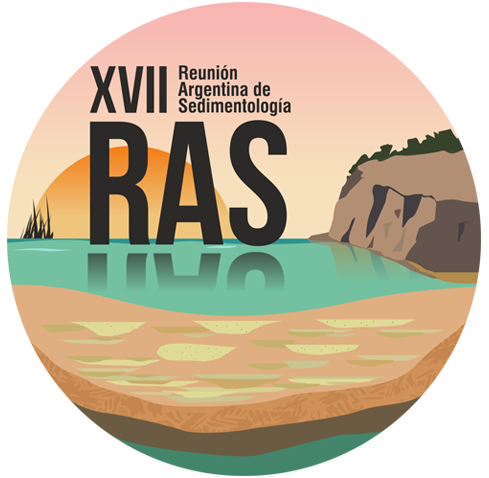Sesión Especial SE3: NIVOLOGÍA: PROCESOS DE TRANSPORTE, DEPOSITACIÓN, ACUMULACIÓN Y DIAGÉNESIS NIVAL
Coordinadores: Juan Pablo Milana (Argentina) y Vicente Sigl (Chile)
Puede parecer que la sedimentología y la nivología, no están relacionadas. Sin embargo, el Oxford Dictionary define al sedimento como: “Particulate matter that is carried by water or wind and deposited on the surface of the land or the seabed, and may in time become
consolidated into rock”. En este sentido, la nieve puede tratarse como un sedimento, mientras el régimen térmico ambiental sea menor a los 0º C. Como todas las otras partículas sólidas, también puede consolidarse y formar una roca, en general monomineral, que se denomina glaciar. Aunque muchos glaciares llegan a tener mas partículas silicoclásticas, que los pueden tornar en glaciares de rocas. Por ello, y dado que muy pocas ciencias tratan la problemática de la nieve en forma específica, es que se ha propuesto una sesión temática en la XVII RAS y VIII CLS, para convocar trabajos de especialistas en procesos nivales tales como su formación, transporte, depositación, y de los procesos
post-depositacionales como retransporte (por viento o gravedad, como las avalanchas). De vital importancia en esta sesión, serán los métodos de detección de los depósitos nivales, técnicas que guardan estrecha conexión con la producción hídrica nival. Además
los procesos de transporte eólico de nieve, y métodos artificiales de manejo. También de gran importancia serán considerados los mecanismos de remoción en masa, nivales y mixtos, y el análisis del riesgo natural de estos procesos de avalanchas, aludes u otros
flujos gravitacionales mixtos. Finalmente nos interesa atraer contribuciones que analicen los procesos de destrucción del manto nival, que guardan estrecha relación con las necesidades hídricas de muchas regiones en donde la nieve es un elemento vital para sociedades y ecosistemas.
Plazo para envío de resúmenes de 1 pág.: 20 de agosto del 2021 (adaptados a las normas publicadas en las circulares del evento).
Contacto: jpmilana@gmail.com
Special Session SE3: NIVOLOGY: PROCESSES OF SNOW TRANSPORT, DEPOSITION, ACCUMULATION AND DIAGENESIS
CONVENERS: Juan Pablo Milana (Argentina) y Vicente Sigl (Chile)
It may look that sedimentology and nivology are not related. However, the Oxford Dictionary defines sediment as the “particulate matter that is carried by water or wind and deposited on the surface of the land or the seabed, and may in time become consolidated into rock”. Therefore, a snow grain can be treated as a sedimentary particle as long as the ambient temperature is general, below 0ºC. Snow may form sedimentary rocks as glaciers, and when siliciclastic and snow particles mix, rock glaciers may even form! Thus, many sedimentological
techniques can be applied to the snow study, and this is the idea of this special session: to attract contributions dealing with the transport, deposition, redeposition, diagenesis and destruction of snow. Snowpack evolution processes are very important as they are water suppliers over many regions. Of great importance would be detection snow methods and temporal tracking of these snow deposits. Equally important are considered those mass flows, as the large spectrum of avalanches and mixed gravitational flow, that may represent an important natural hazard. Finally, contributions dealing with the postdepositional fate of the snow deposits are welcome, as for instance those tracking down the effect of seasonal changes in snow ablation or those studying the internal changes that a snow pack suffers through time. All these processes are of most importance for water provision to ecosystems and human societies.
Deadline for submission of 1-page abstracts: 20th August 2021 (following the published author guide -4TH Circular-).
Contact: jpmilana@gmail.com


Deja tu comentario